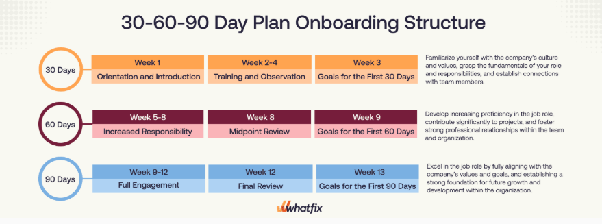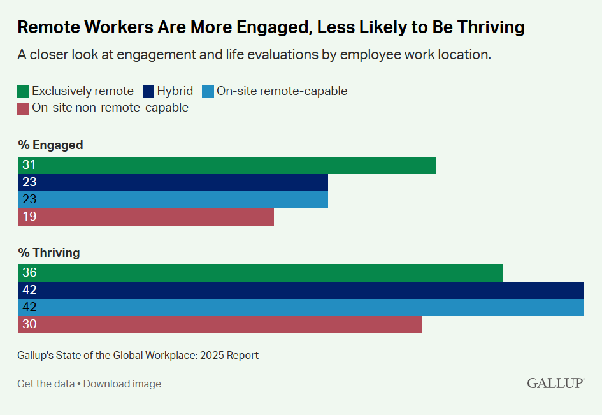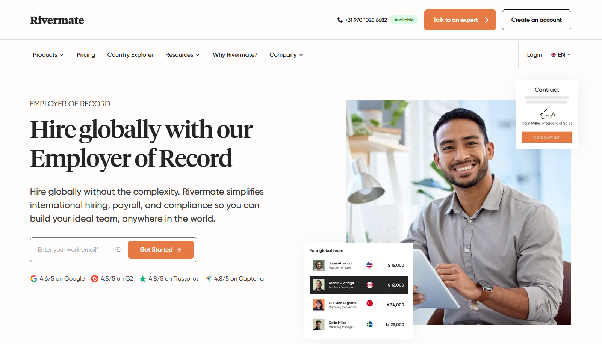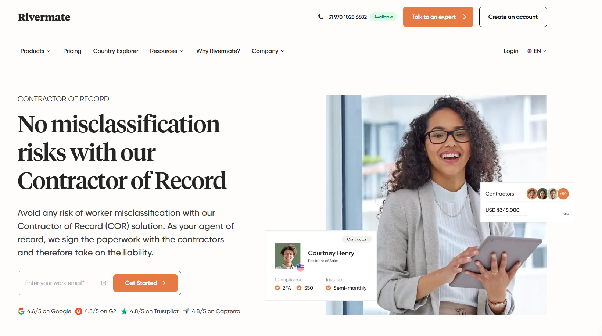
Global Workforce Management
Advantages of Hiring Independent Contractors vs Employees (2025 Edition)
Discover the top 10 benefits of hiring independent contractors and learn how they can save your company time and money.
Lucas Botzen
Global Employment Guides
14 mins read



Our Employer of Record (EOR) solution makes it easy to hire, pay, and manage global employees.
Book a demoTL;DR
Managing remote teams effectively requires clear processes, legal compliance, and >consistent communication across time zones.
Common challenges include cultural misalignment, asynchronous workflows, and >limited visibility into performance.
The 12 best practices range from setting the right tools and rhythms to embedding >global HR compliance from day one.
Sustaining engagement and wellbeing—not just productivity—is key to long-term >remote success.
Platforms like Rivermate help companies manage onboarding, payroll, and compliance >across 150+ countries.
With Rivermate, fast-growing teams gain a human-first partner to support their >remote operations at scale.
Managing a team across borders comes with a different set of challenges than managing one in a single office. Time zones complicate meetings. Hiring rules vary by country. Performance issues are harder to catch early. And compliance mistakes cost more when multiple jurisdictions are involved.
For scaling companies, especially those hiring in new markets, these aren’t theoretical problems; they show up fast. HR workflows get fragmented, finance teams struggle with payroll visibility, and legal teams worry about classification risks.
According to recent surveys in 2025, 29% of remote workers struggle with communication, 22% report loneliness, and 38% of managers say collaboration is harder in remote settings. These aren’t minor issues. They affect engagement, performance, and retention across the board.
This guide breaks down what it actually takes to manage a remote team well: what processes to set up, where companies tend to get stuck, and how to design for clarity and consistency as you grow. It also looks at how Rivermate helps companies manage the operational load without overbuilding internal infrastructure.
Remote work opens up access to a global talent pool, but it also introduces new operational, legal, and cultural complexities. As teams scale across borders, maintaining alignment, productivity, and compliance becomes significantly harder without deliberate structures in place.
Below are some of the most common challenges that great remote managers face when managing distributed teams:
When team members are spread across multiple time zones, even simple tasks can drag. A delay in feedback or approvals can turn a one-day decision into a week-long process. Without a clear async strategy, distributed teams risk slipping into fragmented, reactive workflows.
Each country has its own rules around employment contracts, benefits, data privacy, and payroll reporting. Hiring remote workers without understanding these local regulations creates serious legal risk. Teams often find themselves scrambling for local counsel or unintentionally breaching labor laws.
Startups often rely on international contractors to move quickly. But once these contractors work regular hours, report to managers, or rely on your tools and systems, they may qualify as employees under local law.
Misclassification can result in back taxes, fines, and lawsuits, especially in jurisdictions like Spain, Canada, or Germany.
In 2022, for example, Spain’s Labor Department fined delivery platform Glovo €79 million for misclassifying 10,614 couriers as self-employed in Barcelona and Valencia. Authorities found that Glovo had an employer relationship with these workers, despite labeling them as “autónomos,” which denied them employment benefits and shifted social security costs onto the couriers themselves. The fine equaled over 13% of Glovo’s 2021 revenue.

Caption: Delivery platform Glovo was fined by Spain’s Labor Department for misclassifying its workers As of December 2024, Glovo revealed it will shift 15,000 Spanish couriers to employee status after government pressure and fines for misclassification and labor violations.
In-office teams benefit from informal check-ins and hallway chats. In remote settings, managers must be more intentional about visibility. Without clear KPIs, structured feedback loops, or transparent project tracking, it’s easy for underperformance—or burnout—to go unnoticed.
Paying remote employees or contractors manually across different countries gets messy, fast. You’re dealing with multi-currency payments, varying tax obligations, and country-specific benefits. Without a unified system, finance teams face delays, errors, and lack of control over global headcount costs.
Leading remote teams successfully is less about geography, and more about structure. These 12 best practices help ensure remote team members stay aligned, productive, and compliant at scale.
Asynchronous workflows reduce time zone friction, make collaboration more efficient, and help avoid communication breakdowns. Set expectations early: use written updates for status sharing, record team meetings when needed, and default to documenting decisions.
Tools like Notion or Confluence help store institutional knowledge so that everyone—regardless of time zone—has access to the same context.
💡 Pro tip: Assign an “owner” to key threads so discussions don’t linger. Create internal SLAs for response times to keep things moving without forcing everyone online at the same time.
Distributed teams need consistent systems to avoid confusion. Define a global tool stack for communication (e.g., Slack, Zoom), documentation (e.g., Notion, Google Drive), and project management tools (e.g., Jira, ClickUp). Fragmentation leads to silos and wasted time.
Create process documentation for onboarding, leave requests, expenses, and performance reviews. Consistency helps new hires ramp faster and gives managers confidence that nothing falls through the cracks.
Remote onboarding isn’t just about tool access. It’s about setting expectations and building early connections. Use checklists, welcome videos, and role-specific training modules to support new hires in the first 30–60 days.
Document team norms, company values, and policies in one accessible place. A centralized knowledge base is essential in a remote environment where hallway conversations don’t happen.
Rivermate, for example, takes this a step further by offering a dedicated onboarding session for every employee we hire or transfer on behalf of our clients.
In this live session, we:
This hands-on approach supports a smoother start and reduces the number of support queries HR teams typically field in a remote environment.
Remote teams perform best when expectations are visible and measurable. Define role-specific KPIs that reflect actual outcomes, not time spent online or logged hours.
For example, “Resolve 12 support tickets per week” or “Publish two client proposals per month” gives managers and employees a shared benchmark.
Where possible, connect KPIs to broader team or company goals. This gives employees context and reinforces alignment. Use performance data to drive transparency and reduce the need for constant supervision, especially across time zones.
Regular check-ins are critical in remote environments for progress tracking, development, and connection. They shouldn’t just be routine. They should create space for feedback, clarification, and meaningful dialogue.
 Caption: The 30-60-90 day framework for onboarding new hires
Caption: The 30-60-90 day framework for onboarding new hires
💡 Use a 30-60-90 day framework for new hires to discuss early progress, integration, and long-term goals. For existing team members, bring structure to your 1:1s: cover performance, roadblocks, personal development, and leave room for open conversation.
You don’t need full-day overlap across continents, but you do need 2–3 hours per day when teams can sync if needed. Schedule key rituals (like sprint planning or all-hands meetings) within this shared window.
Map out your team’s working hours visually. Tools like Clockwise can help. Avoid scheduling meetings that consistently force one region to stay late or join early.
International hiring brings risk. Misclassified contractors, vague agreements, or missing documentation can lead to audits or fines. Work with legal or use solutions like Rivermate to generate compliant employment contracts, define roles clearly, and handle localized onboarding.
Don’t assume what worked in one country will work in another. Employment law, tax rules, and benefits expectations vary widely.
Global teams thrive when they feel connected, not just productive. While fully remote employees report the highest engagement globally (31%), they’re also more likely to experience loneliness, anger, and lower overall wellbeing than hybrid or on-site peers. Just 36% say they’re thriving in life, compared to 42% of hybrid workers.
 Caption: Gallup’s data shows fully remote workers have the highest engagement
Caption: Gallup’s data shows fully remote workers have the highest engagement
Small signals matter when it comes to company culture. Rotate meeting times to share the time zone load. Celebrate local holidays, recognize regional wins, and build informal rituals—like team coffee chats or monthly town halls—to foster belonging.
Encourage managers to check in on emotional wellbeing, not just output. Gathering regular, anonymous feedback helps identify when team cohesion is slipping before it turns into attrition.
Remote engagement is sustainable only when it’s paired with meaningful human connection.
Scattered spreadsheets and siloed HR platforms create risk and inefficiency. Use a centralized system that supports local compliance, real-time visibility, and easy reporting. This makes it easier for teams to stay aligned, without needing to chase information across systems.

Caption: Discover how Rivermate helps you hire the best talent worldwide, no matter where they’re located.
Want to find your next top talent, anywhere in the world? With Rivermate’s comprehensive, hands-on approach, we manage your entire recruitment process—from sourcing and screening to hiring high-caliber candidates globally. We take care of everything, so you can focus on what matters most.
Our global recruitment team taps into the right talent pools to find candidates that perfectly match your needs. Whether you're hiring for specialized roles locally or building cost-effective remote teams, we handle the entire process, ensuring you receive the ideal candidate.
10. Equip your team with tools that actually support how they work
The right tools aren’t just a convenience; they’re the foundation of how remote teams operate. Whether it’s for communication, project tracking, or secure data handling, each system should support focus, clarity, and collaboration.
Start with a tool audit. Ask your team what’s working and what’s getting in the way. If a tool adds complexity without real value, it's time to replace it.
Prioritize systems that integrate cleanly with one another. For example, linking Slack with project management tools like Asana or Jira can help reduce duplication and keep conversations tied to action.
Remote employees often miss out on the informal coaching and visibility that comes with in-office roles. Providing structured growth opportunities signals that they’re not just filling a role, they’re building a career.
Encourage regular learning by offering quarterly skill-sharing sessions or inviting legal and compliance experts, and human resources professionals for focused talks. These sessions can tie directly into evolving global employment needs, such as changes to statutory benefits or classification risk.
Where relevant, provide access to learning platforms or reimburse for job-related training. Supporting growth is not just good for morale; it helps companies retain talent and build stronger, more adaptive teams across borders.
Working remotely can blur the lines between home and work, especially across time zones. Encouraging balance starts with setting clear norms, and respecting them.
Let team members define their working hours within a shared calendar so others know when they’re offline. Encourage async work where possible, and avoid rewarding constant availability.
Make it normal to take time off. Remind teams to use PTO, model unplugged behavior as leaders, and consider implementing no-meeting or unplugged days across time zones.
Support mental wellbeing, too. Promote access to mental health resources and make space for conversations about stress, not just output. A healthy team is a sustainable one.
Managing remote teams isn’t just about productivity. It’s about navigating employment law, payroll compliance, and contractor classification across multiple jurisdictions. That’s where Rivermate helps companies simplify the operational and legal overhead of remote team management.
Rivermate lets you legally hire and pay full-time employees in over 150 countries without setting up a local entity. You remain the day-to-day manager, while Rivermate becomes the legal employer, handling contracts, benefits, payroll, and statutory compliance behind the scenes.
 Caption: Simplify global hiring with Rivermate’s EOR solution
Caption: Simplify global hiring with Rivermate’s EOR solution
Whether you’re onboarding your first employee in Berlin or scaling a support team across Southeast Asia, Rivermate ensures the employment setup is fully compliant with local law.
Case study:
CloudCart, a fast-growing tech company based in Germany, needed to hire a remote employee in Amsterdam but ran into legal and tax complexities that even local advisors couldn’t resolve. The situation created delays, uncertainty, and compliance risks.
Rivermate stepped in with a tailored EOR solution. By backdating the employment contracts and managing Dutch tax and labor documentation, Rivermate helped CloudCart quickly transition the employee into a secure, compliant role.
The result was a smooth onboarding experience, reduced administrative overhead, and strong satisfaction on both sides. CloudCart praised Rivermate’s legal expertise, responsiveness, and flexibility.

Rivermate also supports companies hiring independent contractors. Its COR solution reduces misclassification risk by providing a structured onboarding process, custom country-specific agreements, and automated invoicing.
 Caption: Avoid worker misclassification risks with Rivermate’s Contractor of Record solution
Caption: Avoid worker misclassification risks with Rivermate’s Contractor of Record solution
This is especially useful for businesses scaling fast with freelance talent or those converting high-performing contractors into employees.
Bring contractors on board quickly—individually or in bulk—no matter where they’re based.
Set country-specific contracts and define payment terms that match how your business operates.
Contractors submit invoices through Rivermate’s platform. No email chains or manual tracking. Monthly invoicing and payment in 120+ currencies.
Review and approve invoices in a few clicks, then process payments instantly.
View contractor details, payment history, and contract status—all in one place.
Stay compliant across jurisdictions with built-in checks and alerts for changing regulations.
Get guidance on whether a worker should be engaged as a contractor or employee, reducing misclassification risk.
Instead of relying on automation alone, Rivermate assigns each client a dedicated Global Account Manager. Legal teams monitor changes to labor laws daily and update employment terms automatically, keeping your business protected as rules evolve. Support is offered via Slack, WhatsApp, email, or phone, with most issues resolved in under two hours.
Remote work is no longer a trend. It’s how globally minded companies operate. But managing remote teams across borders brings legal, operational, and cultural complexity. Without the right systems in place, what starts as a growth opportunity can quickly turn into a compliance risk or logistical drain.
Rivermate helps you simplify this complexity. Whether you’re hiring full-time remote employees or engaging global contractors, Rivermate provides:
By removing the friction from remote workforce management, you can focus on what matters most: hiring great people and helping them do their best work, wherever they are.
Book a 30-minute consultation with Rivermate to manage your remote team, compliantly, globally, and without the overhead.
How do you manage a remote team effectively?
Use structured workflows, asynchronous communication, and clear KPIs. Compliance, onboarding, and payroll should be centralized to avoid fragmentation. Tools like Rivermate help simplify that process.
What is the key ingredient for managing remote teams?
Clarity. Remote teams need clear expectations around communication, performance, and compliance. Documentation and consistent feedback loops are essential.
What are the challenges of managing a remote team?
Key challenges include time zone coordination, legal compliance, cultural misalignment, and performance visibility. These become harder to manage without centralized systems or expert support.
What are the three C's of a remote workforce?
Communication, compliance, and consistency. Teams that excel in these areas tend to scale remote operations more smoothly.

Lucas Botzen is the founder of Rivermate, a global HR platform specializing in international payroll, compliance, and benefits management for remote companies. He previously co-founded and successfully exited Boloo, scaling it to over €2 million in annual revenue. Lucas is passionate about technology, automation, and remote work, advocating for innovative digital solutions that streamline global employment.


Our Employer of Record (EOR) solution makes it easy to hire, pay, and manage global employees.
Book a demo
Global Workforce Management
Discover the top 10 benefits of hiring independent contractors and learn how they can save your company time and money.
Lucas Botzen

Remote Work and Productivity
Discover the top benefits of hiring remote workers, from cost savings to productivity boosts. Learn why remote teams are the future of work.
Lucas Botzen

International Employment Laws
Discover the crucial role of the minimum wage in shaping the global economy and its impact on businesses and workers alike. From the highest rates in Luxembourg to the evolving economic landscapes in countries like Canada, understand why staying informed about these changes is essential for compliance and strategic business planning. Dive into the insightful analysis of the minimum wage's influence on employment trends, worker morale, and economic growth across various nations.
Lucas Botzen